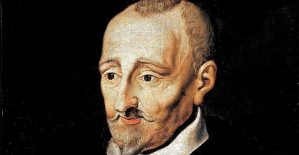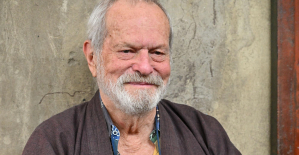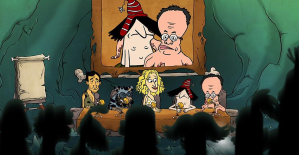"A near 200-year-old epoch goes to the grave when Germany's last stenkolsgruva, Prosper-Haniel in Bottrop, will be closed."
"For the mining town, it means a big change – while environmental organisations want to speed up the phasing-out of fossil fuels in the country."
"Andreas Schreiter has still left the first bit"
"– It is the politicians who have decided to close the mine. It hurts to think that Germany will still use coal, " he says to news agency Bloomberg."
"Of Bottrop, with more than 100,000 inhabitants, now remains to be by way of subsidies to try to attract new businesses and professionals. To put the town on the map has built a skräckmuseum in an abandoned mine and the world's longest indoor ski slope."
"today is the society most of the retired miners, according to mayor Bernd Tischler."
"– Wealthy bavarians would still herding cows up and down the mountain slopes if it were not for the miners in the Ruhr, " he says to Bloomberg."
"social transformation as the closure of the stenkolsgruvorna means is a big challenge for Germany, according to Lisa Maria Dellmuth, a political scientist at Stockholm university."
"– It is a cultural heritage that is dying. Coal has been so associated with the economic growth, the German wonder. Local communities have lived on carbon, " she says to TT."
"In a compromise between the government and the unions in 2007 was over 20 billion in renewable energy sources. Early retirement pensions for miners under the age of 50, and training would reduce unemployment when the mines closed. Large investments have also been made in colleges and universities in the Ruhr region."
"– The most important thing is to see the structural problems in western Germany. Many european regions have seen liquidations of, for example, textile and mobilindustrier, there are huge costs that are incurred locally and which often may not be visible, " says Dellmuth."
"– Regional policy has become all the more important, otherwise, unemployment and exclusion become a breeding ground for discontent."
"She mentions east Germany as an example of where the problems are still there."
"– Many communities are empty, with older people and unemployment, and the nationalist parties such as the AFD is strong."
"Despite the ongoing shift to renewable sources of energy will still, more than a third of Germany's energy needs from the stone and lignite. But in 2007, it was decided to the domestic and unprofitable production would be shut down and coal will from now on be imported from countries such as Russia, the united states and Colombia."
" If you put down mines and continue to import coal, it has not won very much. The coal does not pay its own social costs, " says Ola Hansén, spokesperson for climate action at Wwf in Sweden."
"To shut down about 120 coal-fired power stations in Germany will take over 20 years, according to the government. During the autumn, the environmental demonstrated to accelerate the transformation. It also needs some environmental challenges and billions in decommissioning costs, then all the hard coal mines closed."
"Hansén calls for a more rapid phasing out of fossil fuels."
"– The first EU need from the environment is to phase out all coal, it applies to both brown and hard coal. But you also have to allow for people to make a living in other ways so that we don't have to see the movements of Yellow vests in France."
"Coal represents an intermediate stage in the omvandlingskedjan from peat through lignite to anthracite. The carbon content is high: 84 to 91 per cent. Coal is mainly used as fuel in thermal power stations, but also within for example the steel industry. Last year, it produced 3.7 million tons of coal in Germany, a figure that this year is expected to drop to 2.6 million tonnes due to the closure of the mines, according to the German trade association GVST."
"After the second world war was stenkolsbrytningen important to lift the German economy. However, the reduced profitability have made the industry dependent on subsidies since the 1960s and 2007, the Merkel government's decision on the decommissioning of the mining operations."
"During the stenkolsbrytningens heyday in the 1950s, it employed 600 000 people. But last year, it employed stenkolsgruvorna in Germany only about 5 700 people."
"Germany is still a world leader in the mining of brown coal, which is cheaper but more dangerous for the environment. Total cover brown - and hard coal, 36 per cent of the country's energy needs."
"the Combustion of hard coal and lignite provide large consequences for the climate."
"Source: NE, GVST, Cleanenergywire.org"

 United States: divided on the question of presidential immunity, the Supreme Court offers respite to Trump
United States: divided on the question of presidential immunity, the Supreme Court offers respite to Trump Maurizio Molinari: “the Scurati affair, a European injury”
Maurizio Molinari: “the Scurati affair, a European injury” Hamas-Israel war: US begins construction of pier in Gaza
Hamas-Israel war: US begins construction of pier in Gaza Israel prepares to attack Rafah
Israel prepares to attack Rafah First three cases of “native” cholera confirmed in Mayotte
First three cases of “native” cholera confirmed in Mayotte Meningitis: compulsory vaccination for babies will be extended in 2025
Meningitis: compulsory vaccination for babies will be extended in 2025 Spain is the country in the European Union with the most overqualified workers for their jobs
Spain is the country in the European Union with the most overqualified workers for their jobs Parvovirus alert, the “fifth disease” of children which has already caused the death of five babies in 2024
Parvovirus alert, the “fifth disease” of children which has already caused the death of five babies in 2024 Falling wings of the Moulin Rouge: who will pay for the repairs?
Falling wings of the Moulin Rouge: who will pay for the repairs? “You don’t sell a company like that”: Roland Lescure “annoyed” by the prospect of a sale of Biogaran
“You don’t sell a company like that”: Roland Lescure “annoyed” by the prospect of a sale of Biogaran Insults, threats of suicide, violence... Attacks by France Travail agents will continue to soar in 2023
Insults, threats of suicide, violence... Attacks by France Travail agents will continue to soar in 2023 TotalEnergies boss plans primary listing in New York
TotalEnergies boss plans primary listing in New York La Pléiade arrives... in Pléiade
La Pléiade arrives... in Pléiade In Japan, an animation studio bets on its creators suffering from autism spectrum disorders
In Japan, an animation studio bets on its creators suffering from autism spectrum disorders Terry Gilliam, hero of the Annecy Festival, with Vice-Versa 2 and Garfield
Terry Gilliam, hero of the Annecy Festival, with Vice-Versa 2 and Garfield François Hollande, Stéphane Bern and Amélie Nothomb, heroes of one evening on the beach of the Cannes Film Festival
François Hollande, Stéphane Bern and Amélie Nothomb, heroes of one evening on the beach of the Cannes Film Festival Skoda Kodiaq 2024: a 'beast' plug-in hybrid SUV
Skoda Kodiaq 2024: a 'beast' plug-in hybrid SUV Tesla launches a new Model Y with 600 km of autonomy at a "more accessible price"
Tesla launches a new Model Y with 600 km of autonomy at a "more accessible price" The 10 best-selling cars in March 2024 in Spain: sales fall due to Easter
The 10 best-selling cars in March 2024 in Spain: sales fall due to Easter A private jet company buys more than 100 flying cars
A private jet company buys more than 100 flying cars This is how housing prices have changed in Spain in the last decade
This is how housing prices have changed in Spain in the last decade The home mortgage firm drops 10% in January and interest soars to 3.46%
The home mortgage firm drops 10% in January and interest soars to 3.46% The jewel of the Rocío de Nagüeles urbanization: a dream villa in Marbella
The jewel of the Rocío de Nagüeles urbanization: a dream villa in Marbella Rental prices grow by 7.3% in February: where does it go up and where does it go down?
Rental prices grow by 7.3% in February: where does it go up and where does it go down? Even on a mission for NATO, the Charles-de-Gaulle remains under French control, Lecornu responds to Mélenchon
Even on a mission for NATO, the Charles-de-Gaulle remains under French control, Lecornu responds to Mélenchon “Deadly Europe”, “economic decline”, immigration… What to remember from Emmanuel Macron’s speech at the Sorbonne
“Deadly Europe”, “economic decline”, immigration… What to remember from Emmanuel Macron’s speech at the Sorbonne Sale of Biogaran: The Republicans write to Emmanuel Macron
Sale of Biogaran: The Republicans write to Emmanuel Macron Europeans: “All those who claim that we don’t need Europe are liars”, criticizes Bayrou
Europeans: “All those who claim that we don’t need Europe are liars”, criticizes Bayrou These French cities that will boycott the World Cup in Qatar
These French cities that will boycott the World Cup in Qatar Medicine, family of athletes, New Zealand…, discovering Manae Feleu, the captain of the Bleues
Medicine, family of athletes, New Zealand…, discovering Manae Feleu, the captain of the Bleues Football: OM wants to extend Leonardo Balerdi
Football: OM wants to extend Leonardo Balerdi Six Nations F: France-England shatters the attendance record for women’s rugby in France
Six Nations F: France-England shatters the attendance record for women’s rugby in France Judo: eliminated in the 2nd round of the European Championships, Alpha Djalo in full doubt
Judo: eliminated in the 2nd round of the European Championships, Alpha Djalo in full doubt


















